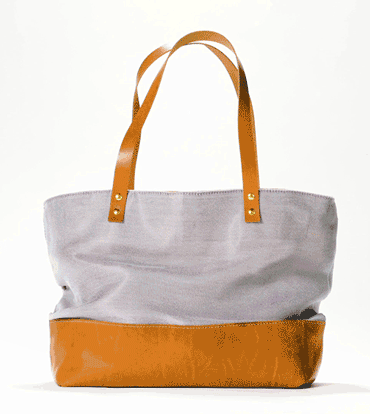Future smart clothes could pack serious gadgetry-1
Whether consumers will buy in is another story

In the future, leaving your phone charger at home will mean only one thing: You forgot to put on pants.
Just as smartphones untethered users from their desktop computers, smart clothing is poised to bring personal electronics out of our pockets and onto our sleeves.
The current generation of wearable technology that includes smart glasses and watches is still more marginal than mainstream. Google Glass fizzled out, and nearly a third of the people who buy fitness trackers lose interest over time. But gadget-packed garments may have an edge when it comes to seamless integration into our lives.
“One conference, somebody stood up and [said], ‘I get that wearable technology is a thing, but I just don’t think I’m going to be willing to get up every single day and remember to put something on,’ ” recalls wearable technology researcher Lucy Dunne. “I looked at her and said, ‘You’re wearing clothes right now. I’m pretty sure you do that already.’ ”

Plus, technology-laden clothing is “right next to and against your body. It has a large surface area compared to personal devices, and it goes with us everywhere,” says Dunne, of the University of Minnesota campus in St. Paul. “That kind of access is ... rich with opportunity.”
Some advanced apparel is already for sale, like gloves threaded with heat-conducting wires to warm fingers on extra cold days, or bathing suits equipped with UV sensors to alert suntanners when they are close to overbaked. But engineers have set their sights on a vast menu of souped-up clothes that could make daily life more convenient — or just better looking.
Job one, though, is to refashion conventional electronics. Typical battery packs and digital displays are too rigid and heavy for weaving into everyday duds. Engineers are getting creative to make lightweight, flexible devices that keep clothing comfortable and still perform as well as their clunky counterparts. Once researchers have built something that works well and is reasonably wearable, they still have to make sure their stuff is sturdy enough to withstand daily wear and tear, not to mention runs through the laundry.
 JAMES PROVOST1. Change your fashion on the fly
JAMES PROVOST1. Change your fashion on the fly

Clothing woven from color-changing yarns could give a whole new meaning to the phrase “goes with anything.”
Most existing color-changing textiles, like sun-activated T-shirts with designs that go from white to rainbow, are triggered by shifts in ambient lighting or body heat. Now, researchers have created clothes that change color with the tap of a smartphone screen.
These garments, presented April 4 in Phoenix at the Materials Research Society spring meeting, are made from yarns as thick as a few strands of human hair. Each yarn comprises a copper wire sheathed in a polymer sleeve. The polymer could be polyester, nylon or some other material, depending on how soft or sturdy you want your fabric, says optics and photonics researcher Joshua Kaufman, a codeveloper of the yarns at the University of Central Florida in Orlando.
The polymer sleeves are laced with pigments that shift color in response to temperature changes too subtle for the wearer to feel. The wearer controls the clothing’s appearance by sending Wi-Fi signals from a smartphone to a battery attached to the garment. The battery feeds electric current into the yarn’s copper wire, heating the pigment to activate a color switch. These yarns could make clothes that rotate between solids, stripes, plaids and other patterns.
Fashion trendsetters and people who just can’t decide what to wear in the morning probably stand the most to gain from this technology.
But it could have benefits for the rest of us, too. Spilled food on your light-colored shirt at lunch? Hide the stain with a darker hue. Want to wear a lighter shade when you’re out in the sun or biking home in the dark? Tap an app. Need to sneak in a second-day wear after skipping laundry day? No problem.
This kind of fabric could also be used for bags, car upholstery, curtains and furniture, says optics and photonics researcher Ayman Abouraddy, also at Central Florida. “We don’t anticipate more than a year or two before you could buy something [made of these fabrics] from the mall,” he says.
 JAMES PROVOST2. Never forget your ID or keys
JAMES PROVOST2. Never forget your ID or keys

Someday, you may be able to embellish your clothes with enough data to get you in the building.
Researchers have created passcode-storing clothes made with thread that contains silver or copper filings. Normally, the magnetic poles of atoms in those metallic threads are pointed in random directions. But holding a magnet close to the thread aligns all the poles in a single section of cloth to point either north or south. Those magnetic orientations encode a bit of data, a 1 or 0, which an instrument called a magnetometer can read.
This data-embedded fabric, presented last October in Quebec City at the Association for Computing Machinery’s Symposium on User Interface Software and Technology, holds onto its magnetic information through washing, drying and ironing — at least for the short term. The strength of the data signal wanes by about 30 percent over the course of a week.
The material can be remagnetized with the same or a different pattern of 1s and 0s, but the researchers first have to build a device that can rewrite this data, similar to the tech used to reprogram hotel keycards, says Justin Chan, a computer scientist and engineer at the University of Washington in Seattle.
Chan and Washington colleague Shyam Gollakota have written magnetic codes into neckties, belts and wristbands, but the tech is still in the nascent stage. Right now, each 1 or 0 is about 2 centimeters across. The researchers are working on packing more data into smaller swatches, Chan says.
Once data-storing clothing is available, you could simply scan your sleeve to enter your office or apartment building. To some people, that may not seem like much of an advance. But the forgetful types who misplace their keys every other day might appreciate one less thing to scramble for on the way out the door.
 JAMES PROVOST3. Micromanage your moves
JAMES PROVOST3. Micromanage your moves

Training yourself to drive a golf ball, play piano or just sit with better posture could get a whole lot easier, thanks to motion-sensing clothes that detect the slightest twitch.
“If you want to know exactly what somebody’s doing — whether or not they’re bending their knee in a healthy way, or what their heart rate and muscle activity is telling you about their emotional state — then you need sensors everywhere,” Dunne says.
To that end, industrial engineer Joshua DeGraff and colleagues have built superthin motion detectors that can be embedded in anything from shoulder braces to shoe soles.
The key component of these sensors is a sheet of material called buckypaper — a dense mesh of carbon nanotubes about as thick as a red blood cell is wide. Normally,buckypaper conducts electricity with no problem(SN: 3/8/14, p. 18). But stretching the material creates gaps in the nanotube network that stymie the flow of electric charge. DeGraff’s team at Florida State University in Tallahassee is using that weakness as an advantage. Connecting a piece of buckypaper to a circuit and measuring changes in electrical resistance across the paper can reveal how much the bucky-paper has been stretched.

Sensors fashioned by DeGraff’s team register as little as a 0.005 percent change in material length. The sensors, described last November inMaterials and Design, could be powered by watch-sized batteries, DeGraff says.
Buckypaper sensors could prove useful for people who need to micromanage their movements in the short term — like physical therapy patients whose rehab requires them to move in exactly the way their therapist prescribed.
If you are ready to upgrade for your clothing brand, welcome to contact us by sending an e-mail tosales@eleheat.com.cn, Eleheat will provide you professional One-Stop Solution for Smart Clothing, Make you Clothing more Functional and Comfortable.
